Visual stimulus-driven functional organization of macaque prefrontal cortex
- PMID: 30521952
- PMCID: PMC6401279
- DOI: 10.1016/j.neuroimage.2018.11.060
Visual stimulus-driven functional organization of macaque prefrontal cortex
Abstract
The extent to which the major subdivisions of prefrontal cortex (PFC) can be functionally partitioned is unclear. In approaching the question, it is often assumed that the organization is task dependent. Here we use fMRI to show that PFC can respond in a task-independent way, and we leverage these responses to uncover a stimulus-driven functional organization. The results were generated by mapping the relative location of responses to faces, bodies, scenes, disparity, color, and eccentricity in four passively fixating macaques. The results control for individual differences in functional architecture and provide the first account of a systematic visual stimulus-driven functional organization across PFC. Responses were focused in dorsolateral PFC (DLPFC), in the ventral prearcuate region; and in ventrolateral PFC (VLPFC), extending into orbital PFC. Face patches were in the VLPFC focus and were characterized by a striking lack of response to non-face stimuli rather than an especially strong response to faces. Color-biased regions were near but distinct from face patches. One scene-biased region was consistently localized with different contrasts and overlapped the disparity-biased region to define the DLPFC focus. All visually responsive regions showed a peripheral visual-field bias. These results uncover an organizational scheme that presumably constrains the flow of information about different visual modalities into PFC.
Published by Elsevier Inc.
Conflict of interest statement
Conflict of Interest: the authors declare that they have no conflicts of interest
Figures
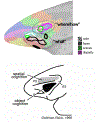
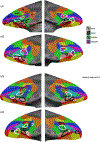
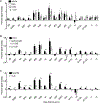
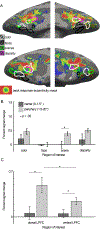
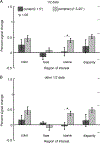


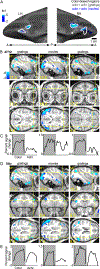

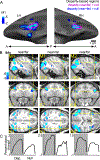
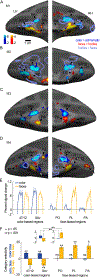
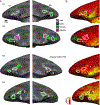



References
-
- Asaad WF, Rainer G, Miller EK, 1998. Neural activity in the primate prefrontal cortex during associative learning. Neuron 21, 1399–1407. - PubMed
-
- Barbas H, 1988. Anatomic organization of basoventral and mediodorsal visual recipient prefrontal regions in the rhesus monkey. J Comp Neurol 276, 313–342. - PubMed
Publication types
MeSH terms
Grants and funding
LinkOut - more resources
Full Text Sources
Miscellaneous

